-
 Bitcoin
Bitcoin $106,754.6083
1.33% -
 Ethereum
Ethereum $2,625.8249
3.80% -
 Tether USDt
Tether USDt $1.0001
-0.03% -
 XRP
XRP $2.1891
1.67% -
 BNB
BNB $654.5220
0.66% -
 Solana
Solana $156.9428
7.28% -
 USDC
USDC $0.9998
0.00% -
 Dogecoin
Dogecoin $0.1780
1.14% -
 TRON
TRON $0.2706
-0.16% -
 Cardano
Cardano $0.6470
2.77% -
 Hyperliquid
Hyperliquid $44.6467
10.24% -
 Sui
Sui $3.1128
3.86% -
 Bitcoin Cash
Bitcoin Cash $455.7646
3.00% -
 Chainlink
Chainlink $13.6858
4.08% -
 UNUS SED LEO
UNUS SED LEO $9.2682
0.21% -
 Avalanche
Avalanche $19.7433
3.79% -
 Stellar
Stellar $0.2616
1.64% -
 Toncoin
Toncoin $3.0222
2.19% -
 Shiba Inu
Shiba Inu $0.0...01220
1.49% -
 Hedera
Hedera $0.1580
2.75% -
 Litecoin
Litecoin $87.4964
2.29% -
 Polkadot
Polkadot $3.8958
3.05% -
 Ethena USDe
Ethena USDe $1.0000
-0.04% -
 Monero
Monero $317.2263
0.26% -
 Bitget Token
Bitget Token $4.5985
1.68% -
 Dai
Dai $0.9999
0.00% -
 Pepe
Pepe $0.0...01140
2.44% -
 Uniswap
Uniswap $7.6065
5.29% -
 Pi
Pi $0.6042
-2.00% -
 Aave
Aave $289.6343
6.02%
Should I leave the market when the long negative line at a high level falls below the moving average?
A long negative line at a high level falling below a moving average signals a potential bearish trend, but consider additional indicators before exiting the market.
Jun 09, 2025 at 07:43 am
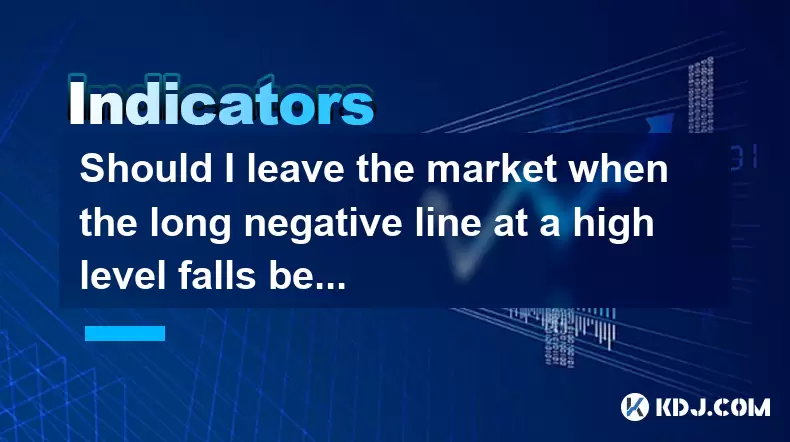
When analyzing the cryptocurrency market, one of the key technical indicators traders often look at is the relationship between price action and moving averages. A long negative line at a high level falling below a moving average can indeed be a significant signal. However, deciding whether to leave the market based solely on this indicator requires a deeper understanding of the context and additional technical analysis. Let's explore this scenario in detail.
Understanding the Long Negative Line
A long negative line, often referred to as a long bearish candlestick, indicates strong selling pressure within a given timeframe. When this occurs at a high level, it suggests that the asset may have reached a peak, and sellers are beginning to dominate the market. The length of the candlestick body and the presence of shadows can provide further insights into the strength of the selling pressure.
The Role of Moving Averages
Moving averages are used to smooth out price action and identify trends over a specified period. Common types include the Simple Moving Average (SMA) and the Exponential Moving Average (EMA). A price falling below a moving average can be interpreted as a bearish signal, suggesting that the current trend may be reversing.
Interpreting the Signal
When a long negative line at a high level falls below a moving average, it can be a strong indication that the bullish trend is losing momentum. However, this signal should not be considered in isolation. Traders often look at other indicators and factors to confirm the signal before making a decision to exit the market.
Additional Indicators to Consider
To make a more informed decision, consider the following additional indicators:
- Relative Strength Index (RSI): This momentum oscillator can help identify overbought or oversold conditions. An RSI reading above 70 indicates overbought conditions, while a reading below 30 suggests oversold conditions.
- Volume: High trading volume accompanying the long negative line can reinforce the bearish signal, indicating strong selling pressure.
- Support and Resistance Levels: If the price falls below a key support level, it can confirm the bearish trend.
- Other Moving Averages: Look at different moving averages (e.g., 50-day, 200-day) to see if they align with the bearish signal.
Case Study: Bitcoin Example
Let's consider a hypothetical scenario with Bitcoin. Suppose Bitcoin has been in an uptrend, reaching a high of $60,000. A long negative line forms, closing at $58,000, and the price falls below the 50-day SMA, which is at $57,000. This could be a signal to consider exiting the market. However, before making a decision, a trader should:
- Check the RSI: If the RSI is above 70, it could indicate that Bitcoin is overbought and a correction is likely.
- Look at the volume: If the volume is significantly higher than average, it strengthens the bearish signal.
- Identify key support levels: If $57,000 is a known support level and the price breaks below it, it further confirms the bearish trend.
Risk Management and Exit Strategy
Even with a strong bearish signal, it's crucial to have a well-defined risk management and exit strategy. This includes:
- Setting stop-loss orders to limit potential losses.
- Determining the size of the position based on risk tolerance.
- Considering partial exits to lock in profits while leaving some positions open for potential recovery.
Psychological Factors
Market sentiment and psychological factors can also influence decision-making. Fear and greed can drive irrational decisions, so it's important to remain disciplined and adhere to a trading plan. A long negative line at a high level falling below a moving average can trigger panic selling, but experienced traders will wait for confirmation from other indicators before acting.
Technical Analysis Tools
To effectively analyze the market and make informed decisions, traders use various technical analysis tools. These include:
- Charting platforms: Platforms like TradingView or MetaTrader offer advanced charting capabilities to visualize price action and indicators.
- Automated trading software: Tools like Trading Bots can execute trades based on predefined criteria, including moving averages and candlestick patterns.
- Mobile apps: Apps like Coinbase or Binance provide real-time data and alerts, allowing traders to monitor the market on the go.
Practical Steps for Analysis
When you encounter a long negative line at a high level falling below a moving average, follow these steps to analyze the situation:
- Open your charting platform: Use a reliable platform like TradingView or MetaTrader to view the price action.
- Identify the long negative line: Look for a long bearish candlestick at a recent high.
- Check the moving average: Confirm that the closing price of the candlestick is below the relevant moving average (e.g., 50-day SMA).
- Analyze additional indicators: Check the RSI, volume, and support/resistance levels to confirm the bearish signal.
- Review your risk management plan: Decide on stop-loss levels and position sizing based on your risk tolerance.
- Consider market sentiment: Assess whether the market sentiment aligns with the technical indicators.
Real-World Application
In the real world, traders often combine multiple indicators and strategies to make decisions. For example, a trader might use a long negative line at a high level falling below a moving average as a signal to exit a long position. However, they might also wait for a confirmation from a bearish divergence on the MACD (Moving Average Convergence Divergence) indicator before acting.
Conclusion
While a long negative line at a high level falling below a moving average can be a strong bearish signal, it should not be the sole basis for exiting the market. Traders need to consider additional technical indicators, risk management strategies, and market sentiment to make informed decisions. By following a disciplined approach and using a combination of tools and analysis, traders can navigate the volatile cryptocurrency market more effectively.
Frequently Asked Questions
Can a single indicator be enough to make a trading decision?
- While a single indicator like a long negative line at a high level falling below a moving average can provide valuable insights, it is generally not recommended to make trading decisions based on one indicator alone. Combining multiple indicators and considering market context can lead to more reliable decisions.
How often should I check my trading indicators?
- The frequency of checking trading indicators depends on your trading style. Day traders may need to monitor indicators throughout the day, while swing traders might check them less frequently, such as daily or weekly. It's important to find a balance that suits your strategy and lifestyle.
What is the best moving average to use for cryptocurrency trading?
- There is no one-size-fits-all answer to the best moving average for cryptocurrency trading. Common choices include the 50-day and 200-day SMAs, but the best moving average depends on your trading timeframe and strategy. Some traders use a combination of short-term and long-term moving averages to get a more comprehensive view of the market.
How can I improve my technical analysis skills?
- Improving technical analysis skills involves continuous learning and practice. Consider the following steps:
- Study educational resources: Books, online courses, and webinars can provide foundational knowledge.
- Use demo accounts: Practice trading with virtual money to test strategies without risking real funds.
- Join trading communities: Engage with other traders to share insights and learn from their experiences.
- Keep a trading journal: Document your trades and analyze them to identify patterns and areas for improvement.
- Improving technical analysis skills involves continuous learning and practice. Consider the following steps:
Disclaimer:info@kdj.com
The information provided is not trading advice. kdj.com does not assume any responsibility for any investments made based on the information provided in this article. Cryptocurrencies are highly volatile and it is highly recommended that you invest with caution after thorough research!
If you believe that the content used on this website infringes your copyright, please contact us immediately (info@kdj.com) and we will delete it promptly.
- 2025-W Uncirculated American Gold Eagle and Dr. Vera Rubin Quarter Mark New Products
- 2025-06-13 06:25:13
- Ruvi AI (RVU) Leverages Blockchain and Artificial Intelligence to Disrupt Marketing, Entertainment, and Finance
- 2025-06-13 07:05:12
- H100 Group AB Raises 101 Million SEK (Approximately $10.6 Million) to Bolster Bitcoin Reserves
- 2025-06-13 06:25:13
- Galaxy Digital CEO Mike Novogratz Says Bitcoin Will Replace Gold and Go to $1,000,000
- 2025-06-13 06:45:13
- Trust Wallet Token (TWT) Price Drops 5.7% as RWA Integration Plans Ignite Excitement
- 2025-06-13 06:45:13
- Ethereum (ETH) Is in the Second Phase of a Three-Stage Market Cycle
- 2025-06-13 07:25:13
Related knowledge
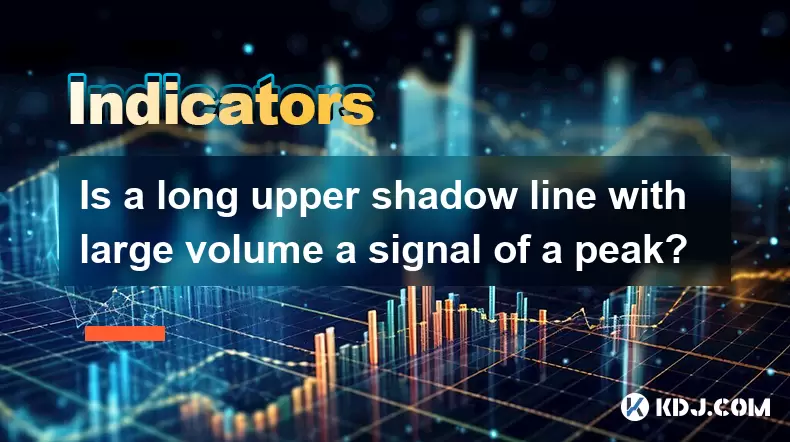
Is a long upper shadow line with large volume a signal of a peak?
Jun 17,2025 at 05:07am
Understanding the Long Upper Shadow LineA long upper shadow line, often referred to as a shooting star or inverted hammer depending on its location in a chart, is a candlestick pattern that indicates potential reversal from an uptrend. This pattern forms when prices rise significantly during the trading period but then fall back to close near the openin...

How to confirm the effectiveness of the average price line support in the time-sharing chart?
Jun 17,2025 at 12:56am
Understanding the Time-Sharing Chart and Its RelevanceIn cryptocurrency trading, time-sharing charts play a crucial role in analyzing short-term price movements. These charts typically display price fluctuations over a specific period, often ranging from minutes to hours. Traders rely on them to make quick decisions based on real-time data. The average ...
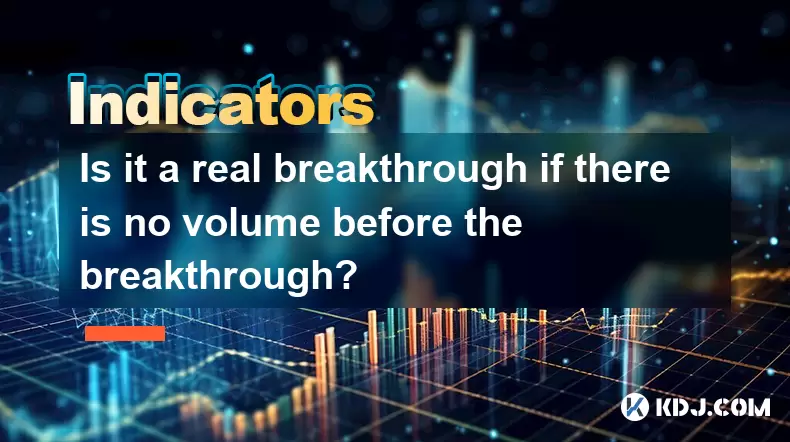
Is it a real breakthrough if there is no volume before the breakthrough?
Jun 17,2025 at 08:03am
Understanding the Concept of a Breakthrough in Cryptocurrency TradingIn cryptocurrency trading, a breakthrough typically refers to a price movement that surpasses a key resistance or support level. Traders often look for such events as potential signals for trend continuation or reversal. However, a crucial factor that determines the strength and reliab...

What does it mean when the momentum indicator breaks above the zero axis?
Jun 17,2025 at 12:43am
Understanding the Momentum IndicatorThe momentum indicator is a technical analysis tool used to measure the speed or velocity of price movements in cryptocurrency markets. It helps traders identify potential trend reversals, overbought or oversold conditions, and confirms existing trends. The indicator typically oscillates around a zero line, with value...
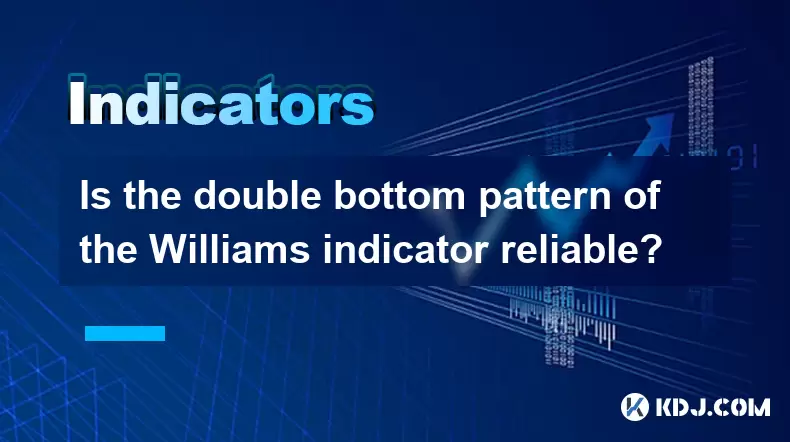
Is the double bottom pattern of the Williams indicator reliable?
Jun 17,2025 at 03:56am
Understanding the Williams Indicator and Its SignificanceThe Williams %R indicator, often referred to as Williams Percent Range, is a momentum oscillator used in technical analysis to identify overbought or oversold conditions in the market. Developed by Larry Williams, this indicator fluctuates between 0 and -100, with readings above -20 indicating ove...
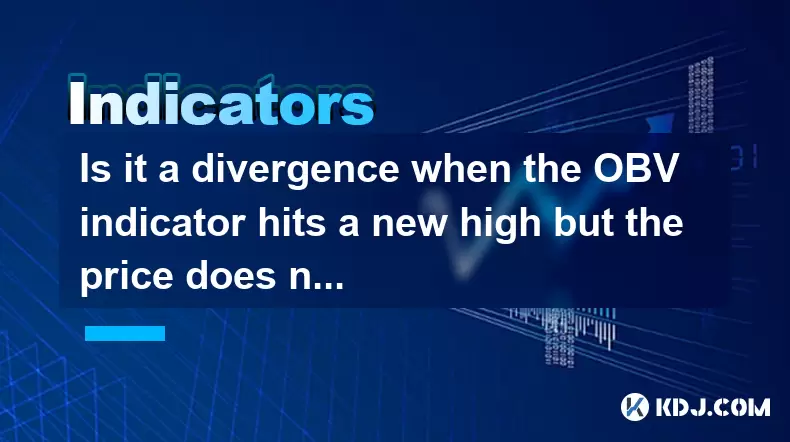
Is it a divergence when the OBV indicator hits a new high but the price does not rise?
Jun 17,2025 at 11:15am
Understanding the On-Balance Volume (OBV) IndicatorThe On-Balance Volume (OBV) is a momentum indicator used in technical analysis to predict changes in stock or cryptocurrency prices. It measures buying and selling pressure by adding volume on up days and subtracting volume on down days. The idea behind OBV is that volume often precedes price movement, ...

Is a long upper shadow line with large volume a signal of a peak?
Jun 17,2025 at 05:07am
Understanding the Long Upper Shadow LineA long upper shadow line, often referred to as a shooting star or inverted hammer depending on its location in a chart, is a candlestick pattern that indicates potential reversal from an uptrend. This pattern forms when prices rise significantly during the trading period but then fall back to close near the openin...

How to confirm the effectiveness of the average price line support in the time-sharing chart?
Jun 17,2025 at 12:56am
Understanding the Time-Sharing Chart and Its RelevanceIn cryptocurrency trading, time-sharing charts play a crucial role in analyzing short-term price movements. These charts typically display price fluctuations over a specific period, often ranging from minutes to hours. Traders rely on them to make quick decisions based on real-time data. The average ...

Is it a real breakthrough if there is no volume before the breakthrough?
Jun 17,2025 at 08:03am
Understanding the Concept of a Breakthrough in Cryptocurrency TradingIn cryptocurrency trading, a breakthrough typically refers to a price movement that surpasses a key resistance or support level. Traders often look for such events as potential signals for trend continuation or reversal. However, a crucial factor that determines the strength and reliab...

What does it mean when the momentum indicator breaks above the zero axis?
Jun 17,2025 at 12:43am
Understanding the Momentum IndicatorThe momentum indicator is a technical analysis tool used to measure the speed or velocity of price movements in cryptocurrency markets. It helps traders identify potential trend reversals, overbought or oversold conditions, and confirms existing trends. The indicator typically oscillates around a zero line, with value...

Is the double bottom pattern of the Williams indicator reliable?
Jun 17,2025 at 03:56am
Understanding the Williams Indicator and Its SignificanceThe Williams %R indicator, often referred to as Williams Percent Range, is a momentum oscillator used in technical analysis to identify overbought or oversold conditions in the market. Developed by Larry Williams, this indicator fluctuates between 0 and -100, with readings above -20 indicating ove...

Is it a divergence when the OBV indicator hits a new high but the price does not rise?
Jun 17,2025 at 11:15am
Understanding the On-Balance Volume (OBV) IndicatorThe On-Balance Volume (OBV) is a momentum indicator used in technical analysis to predict changes in stock or cryptocurrency prices. It measures buying and selling pressure by adding volume on up days and subtracting volume on down days. The idea behind OBV is that volume often precedes price movement, ...
See all articles

























































































